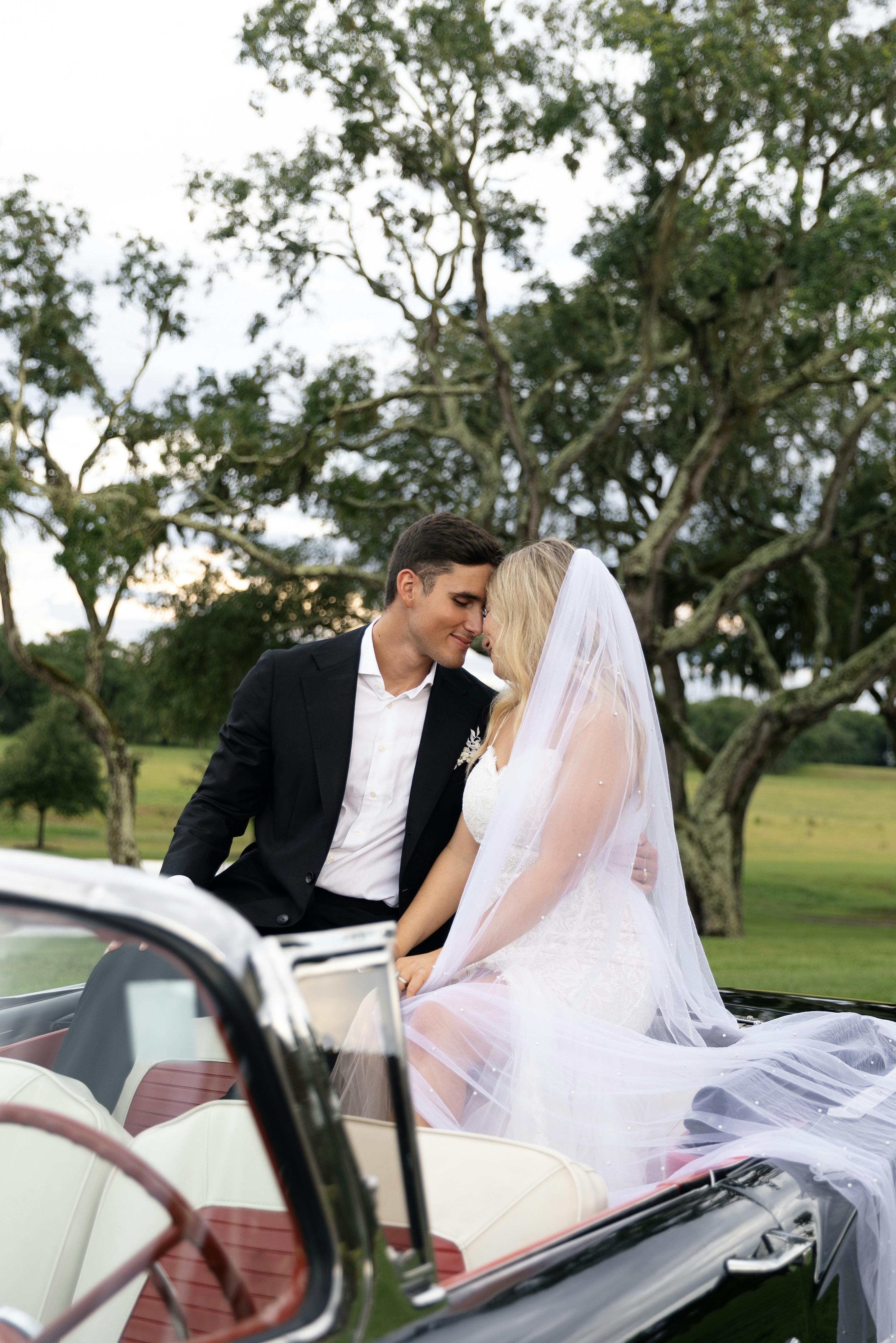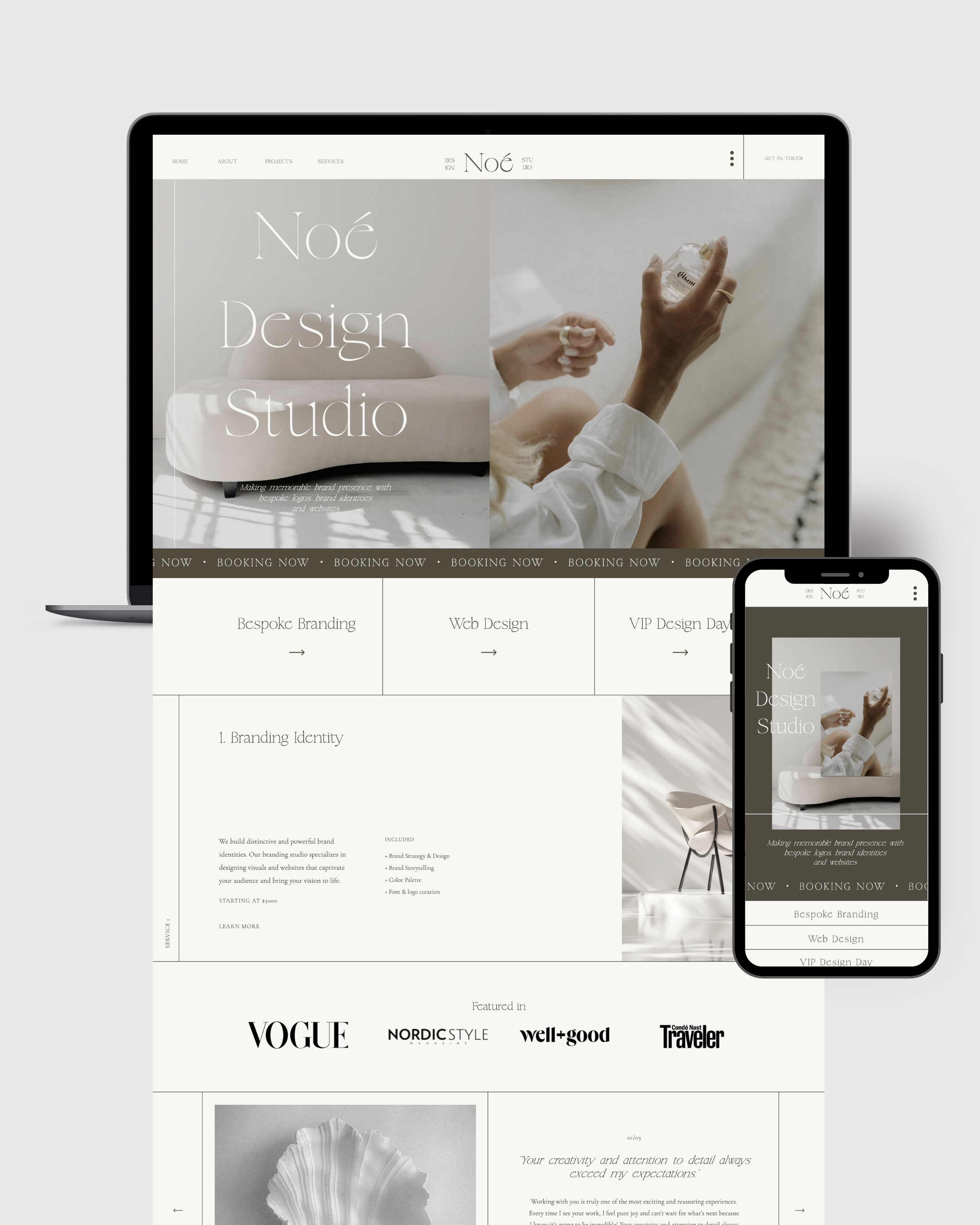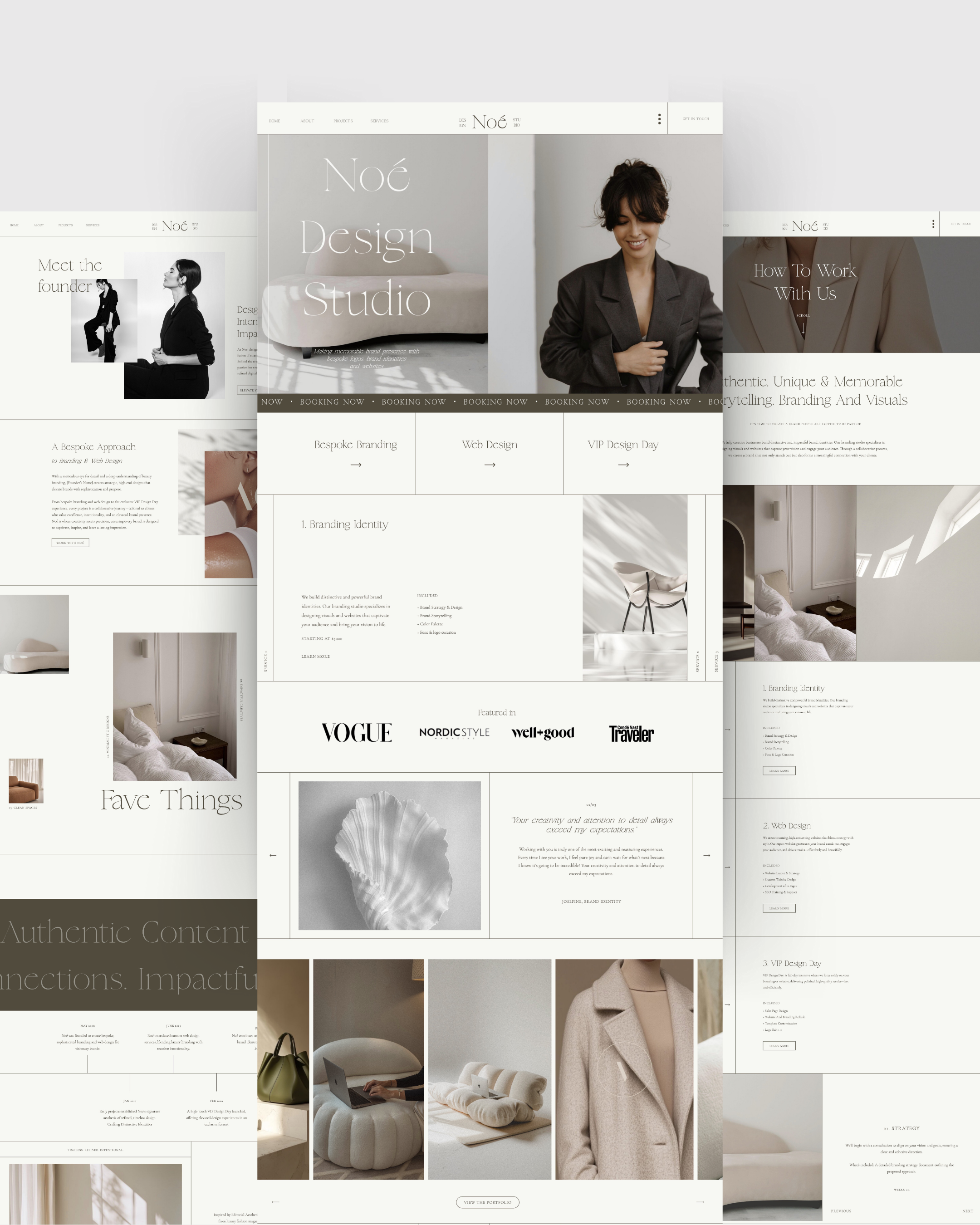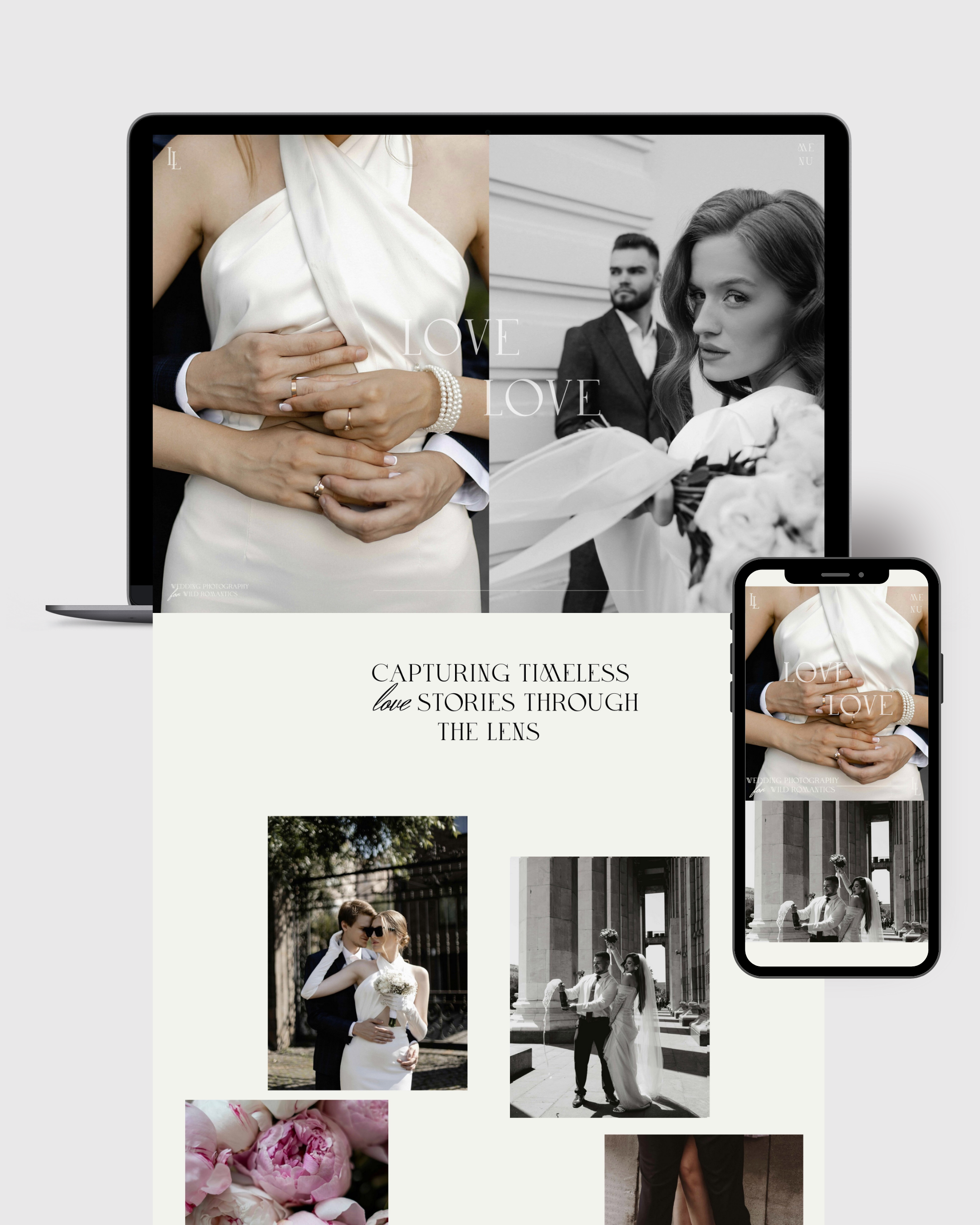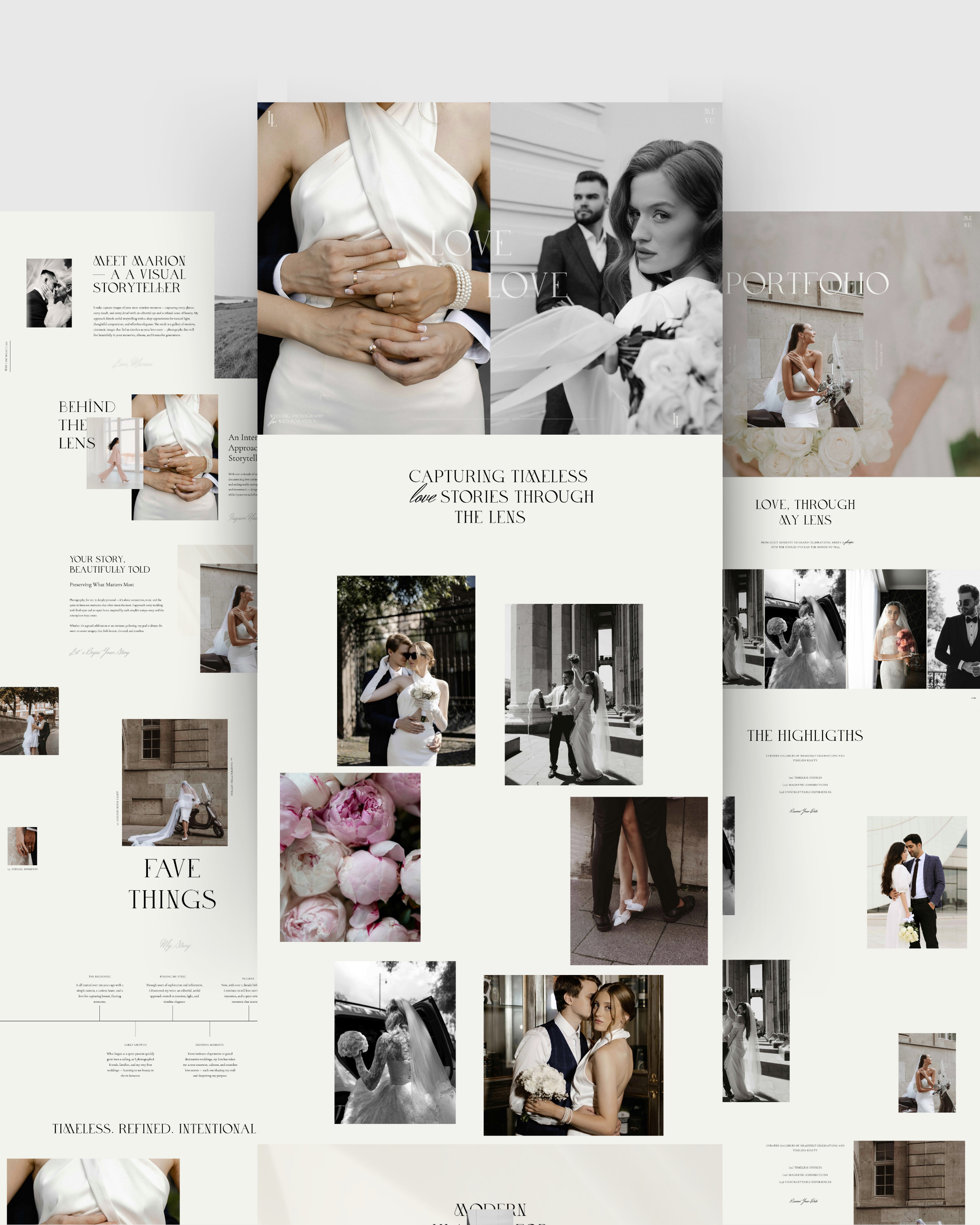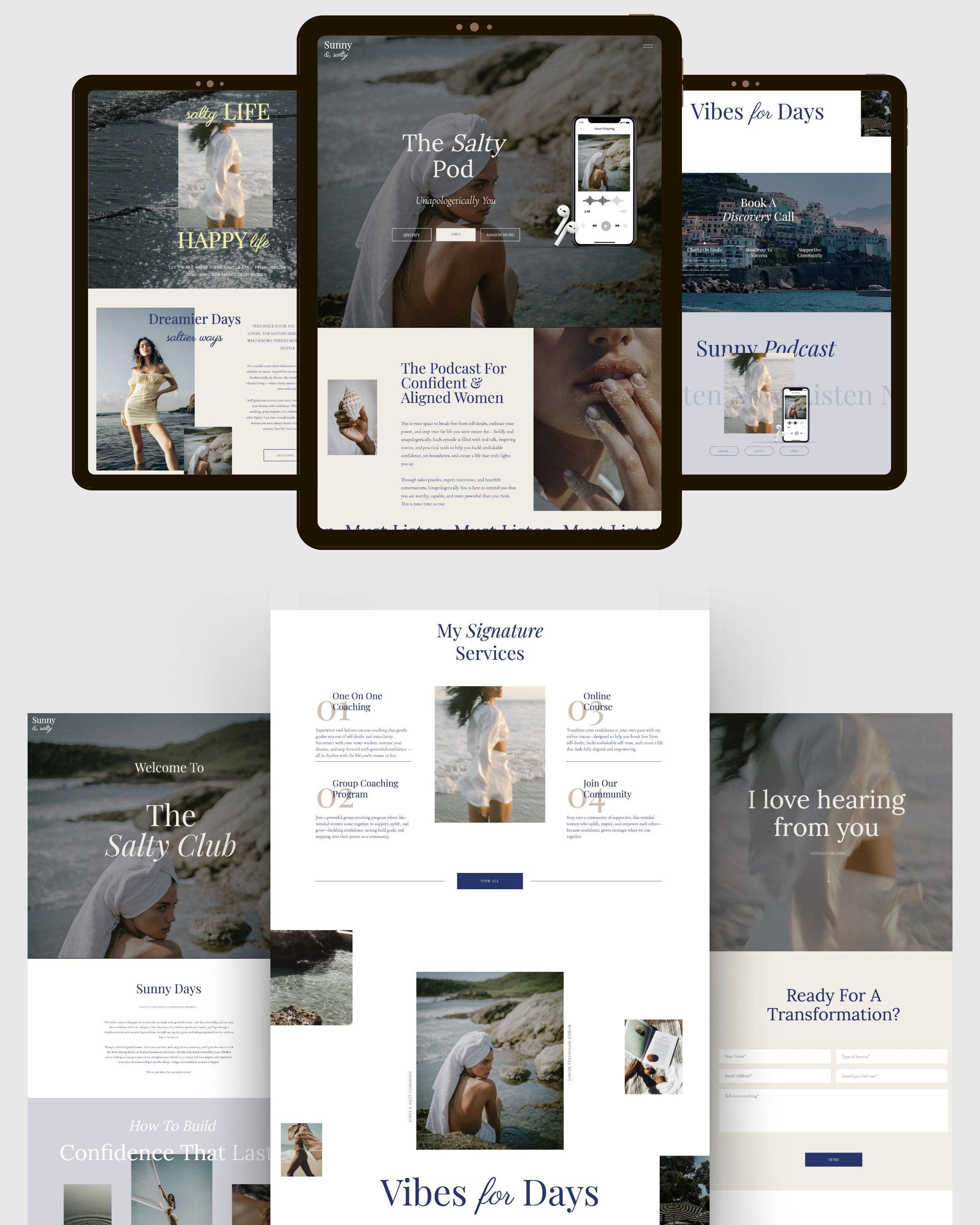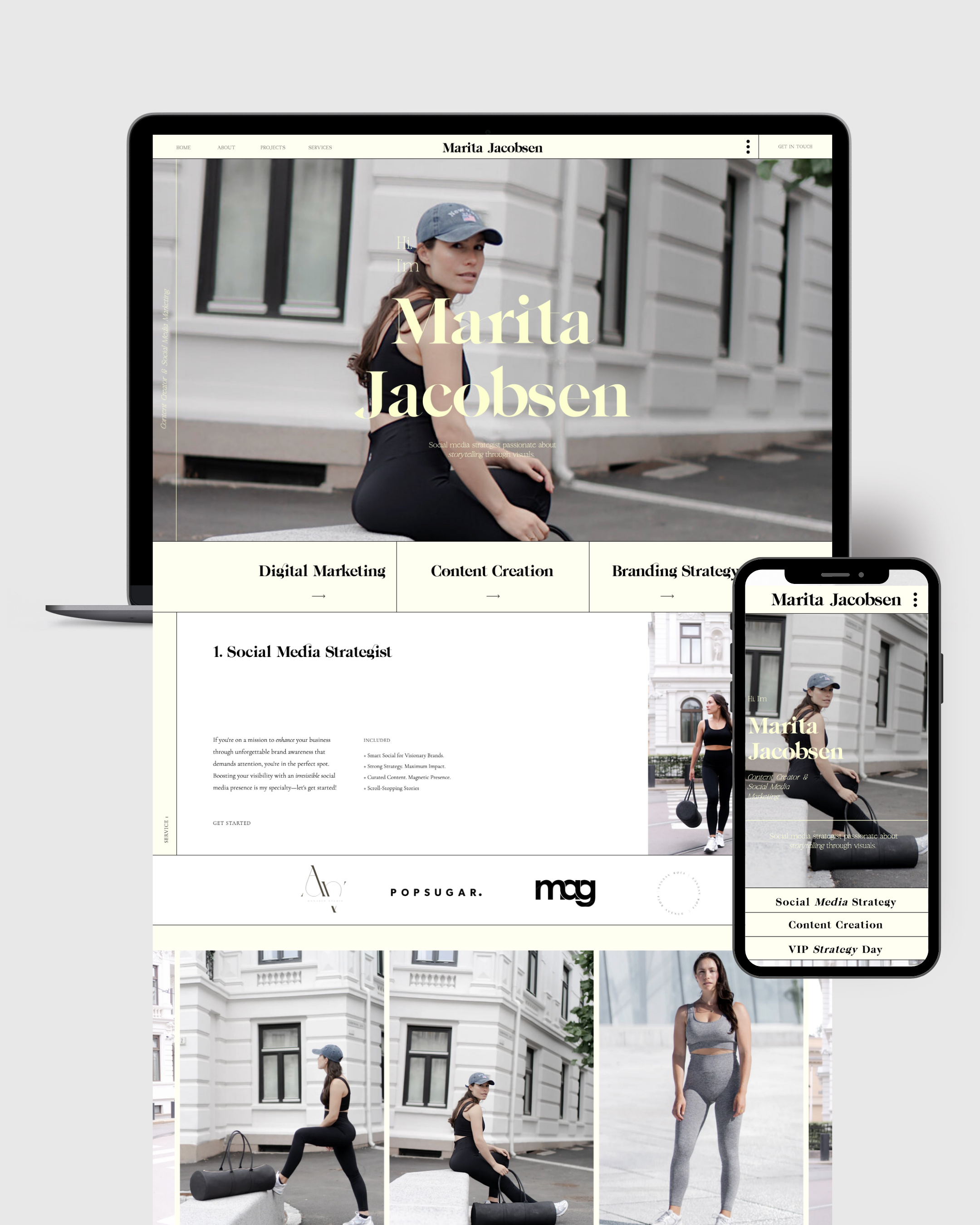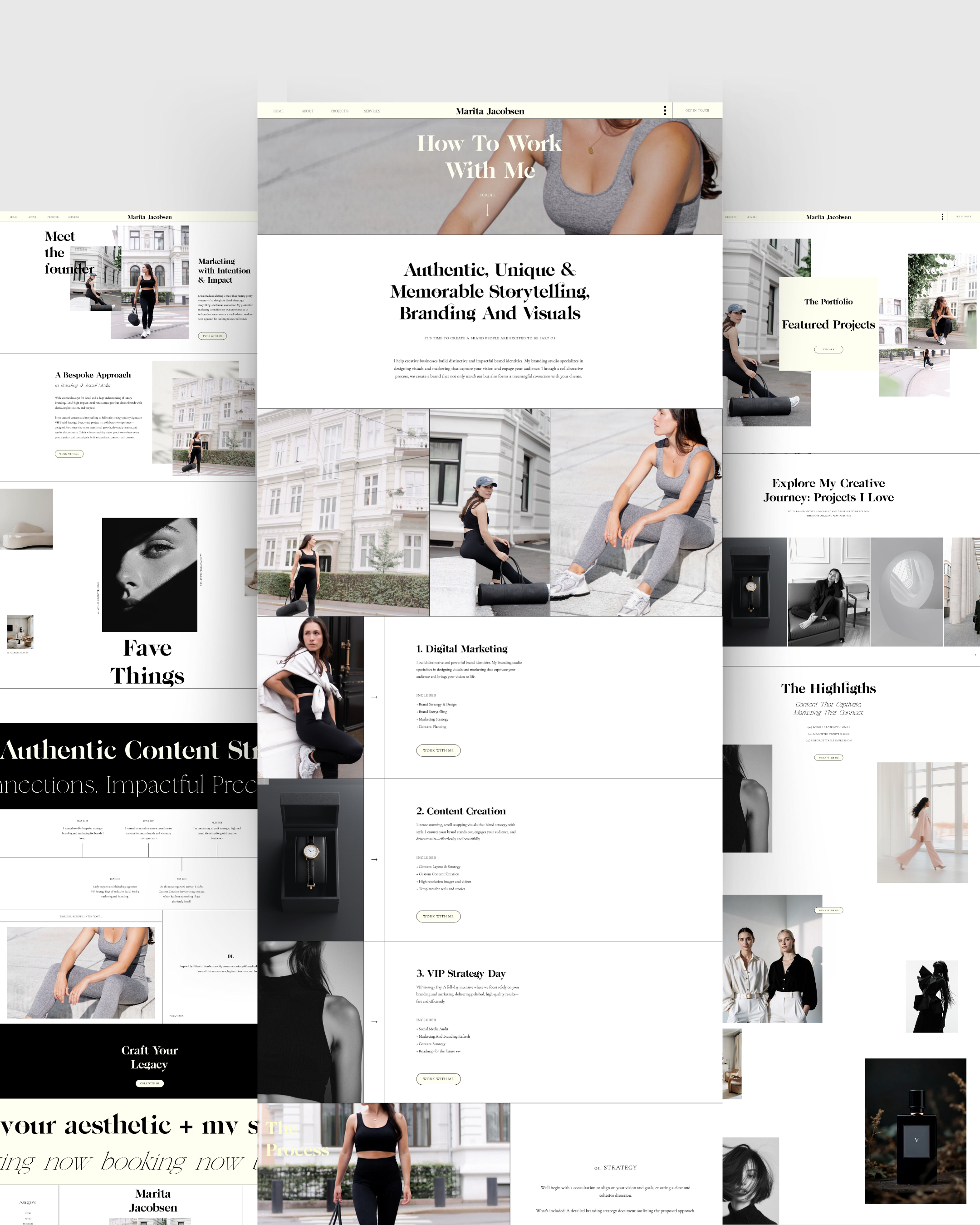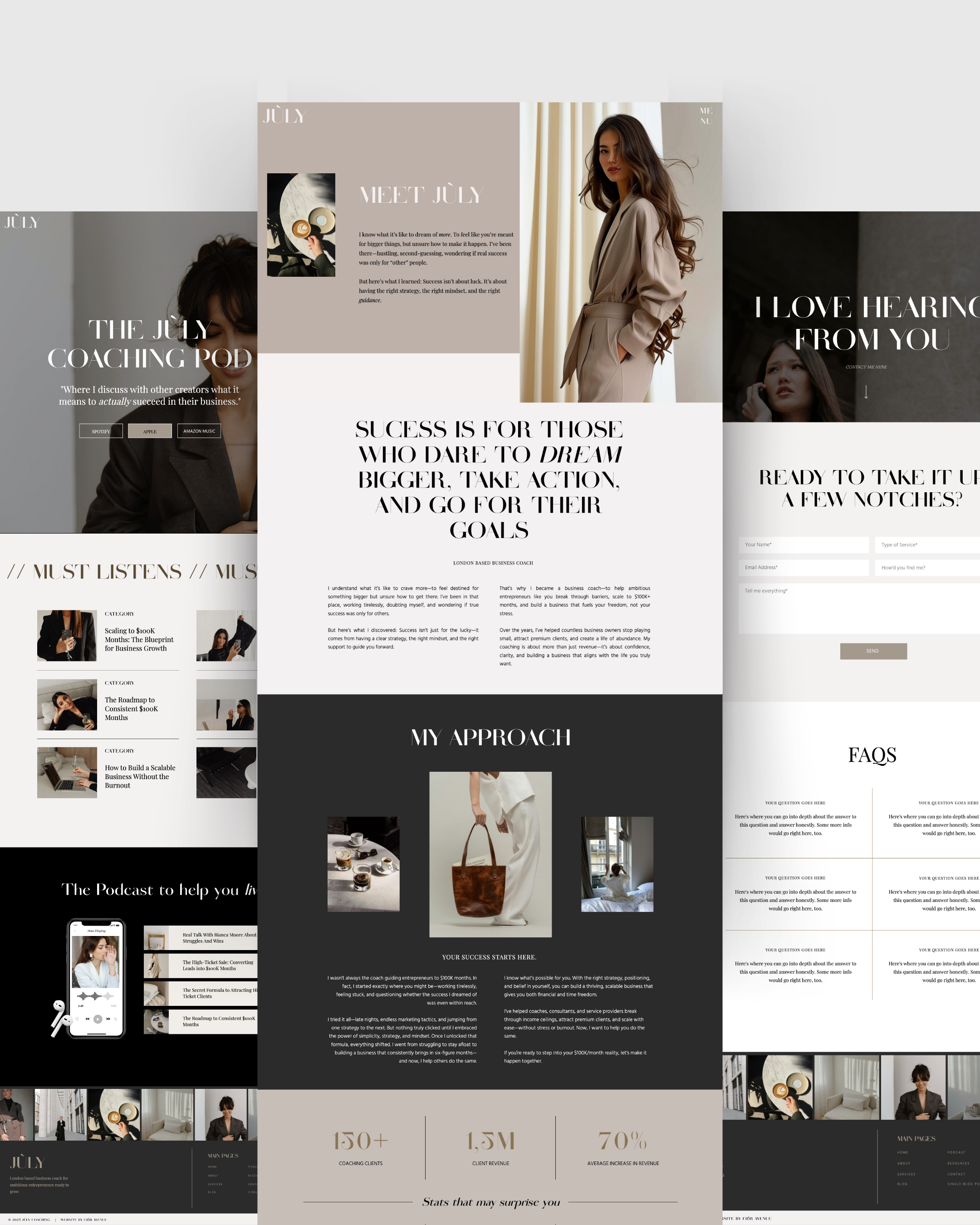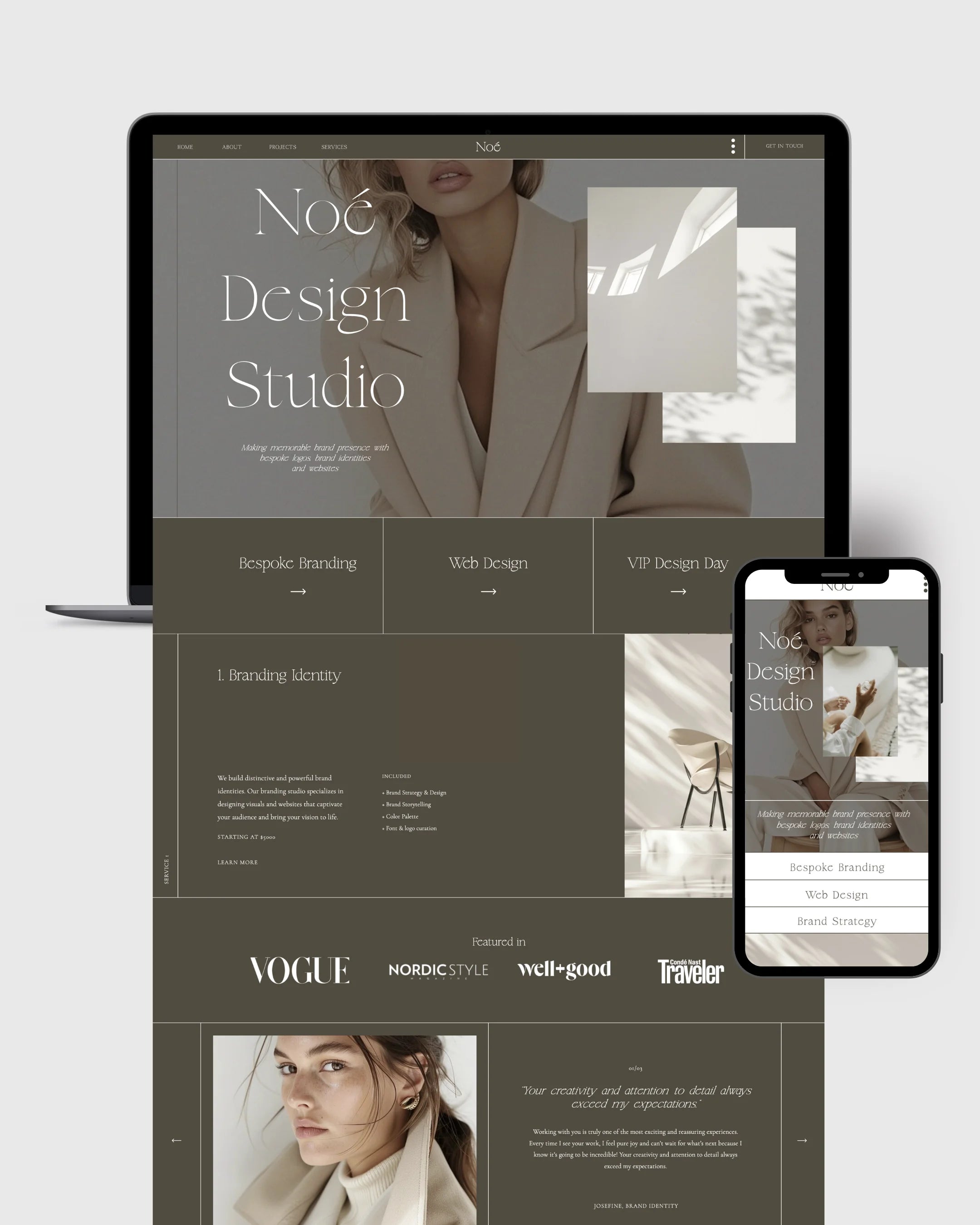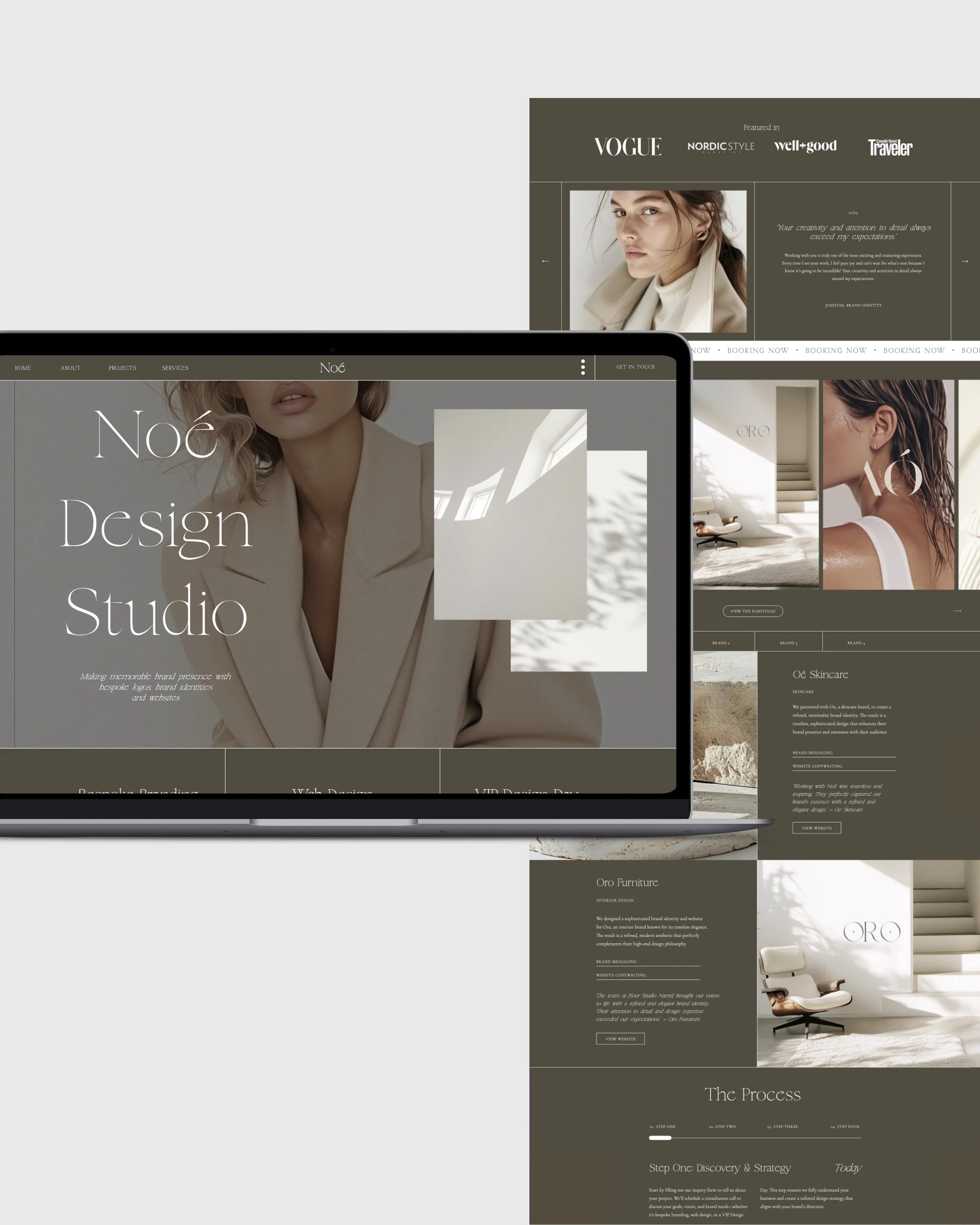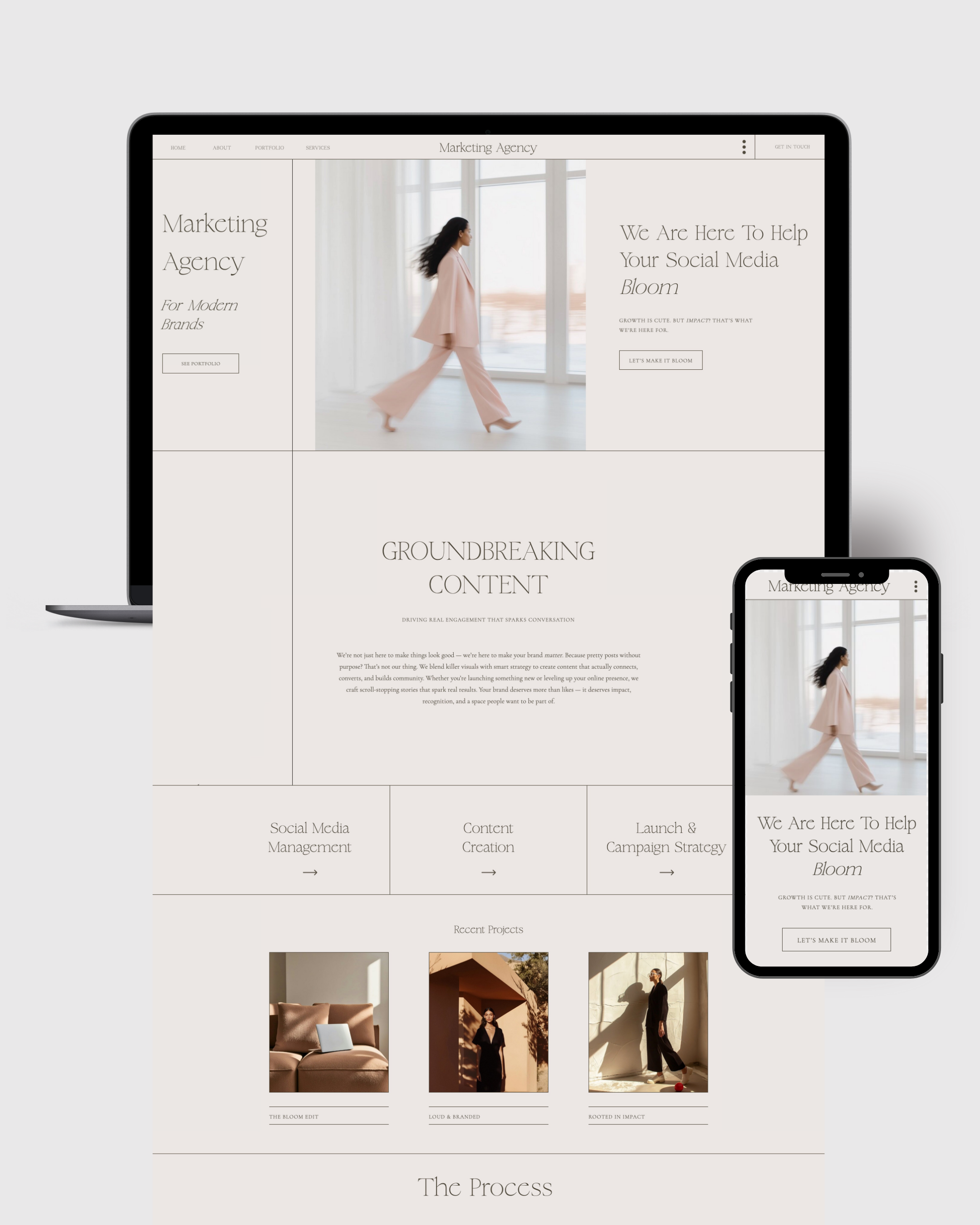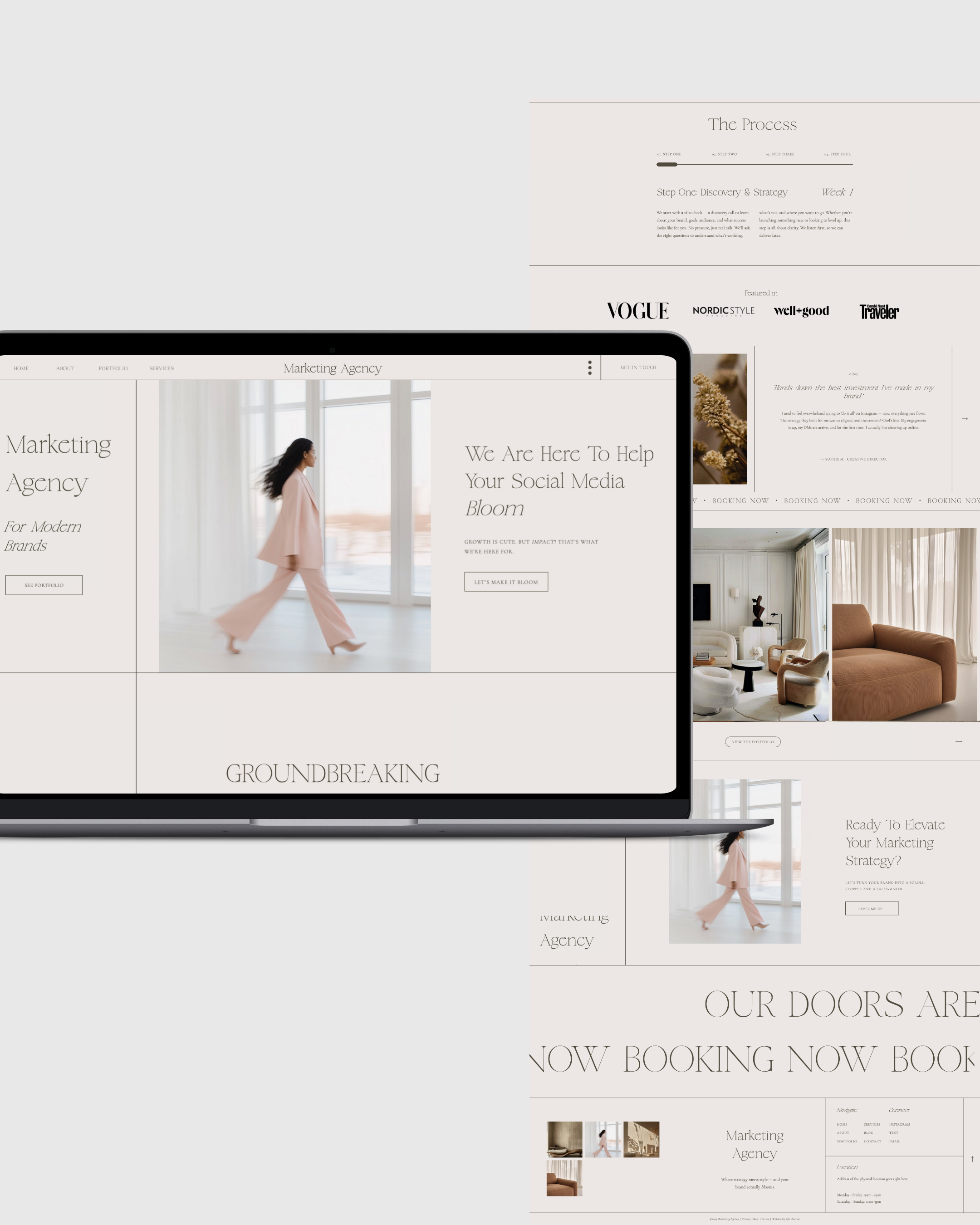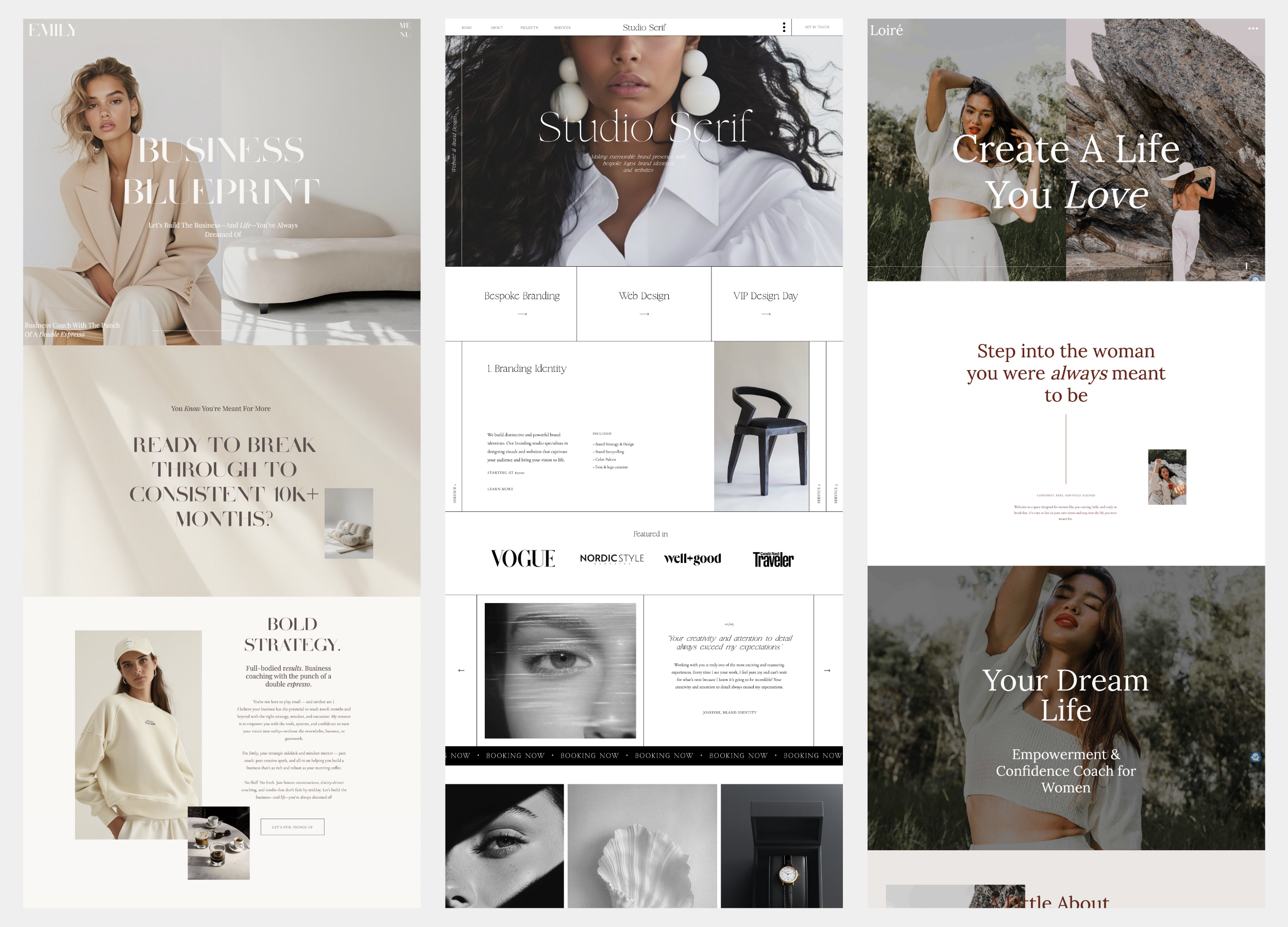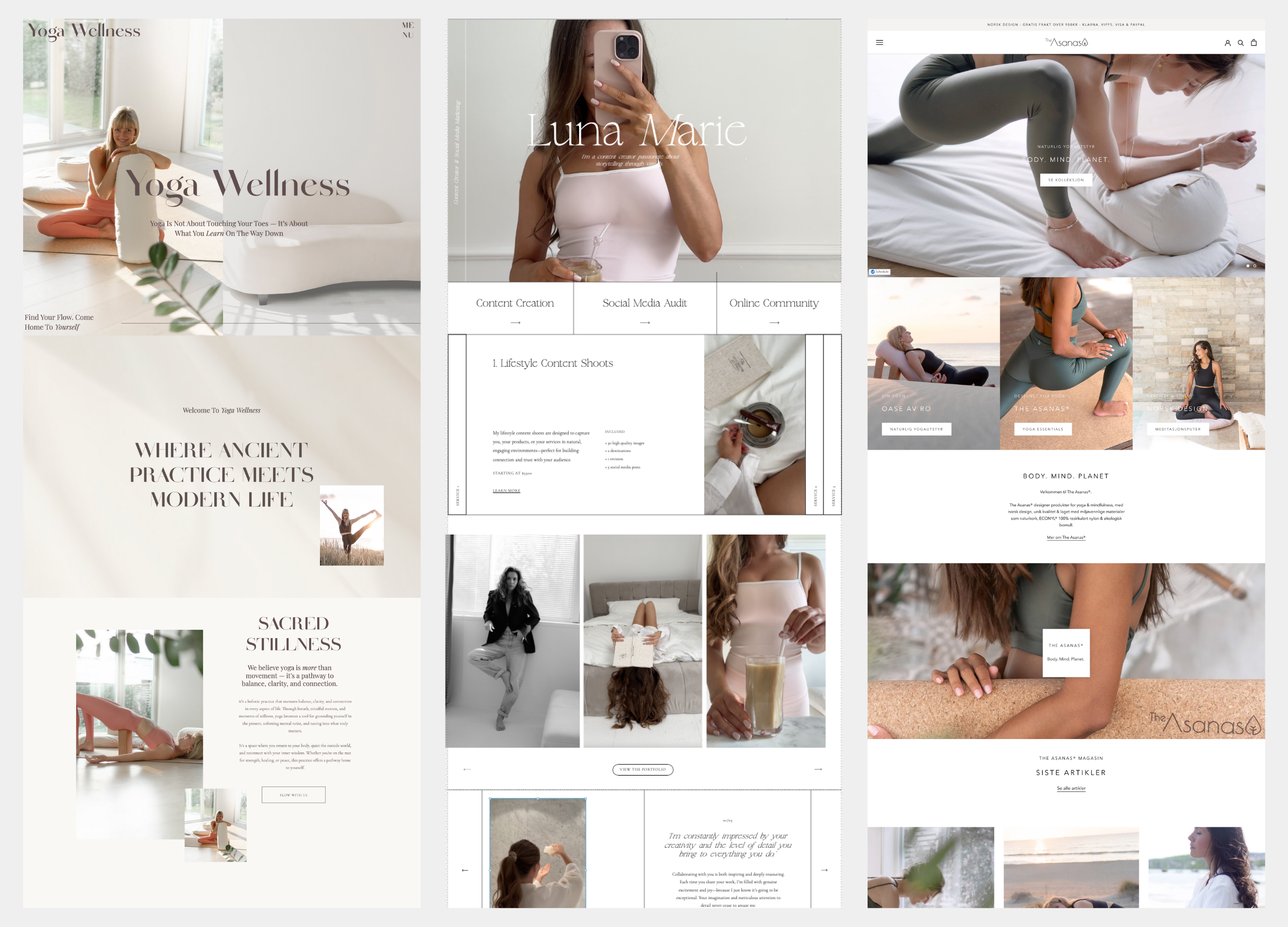
What Every Wedding Photographer Needs in a Website (+ Template Checklist)
The visual, strategic, and emotional must-haves for a client-attracting online presence
Wedding photography is one of the most personal, trust-based, and emotionally driven industries in the creative world. You're not just capturing light—you’re freezing once-in-a-lifetime moments into timeless keepsakes. Which means your website has a job to do—and it’s not just to look good.
Your website is often the very first interaction a couple has with your work. It needs to build trust, communicate your style, answer unspoken questions, and guide visitors to take action. The best wedding photography websites don’t just show pretty pictures—they convert browsers into booked clients.
So, what actually makes a photographer’s website effective? In this guide, we’re walking through the non-negotiables—from strategic layout to brand storytelling—and finishing with a practical, downloadable checklist to help you build (or refine) a site that truly works for you.
Let’s dive into what every wedding photographer needs in a website—and how you can build it beautifully with a template that gives you both design and strategy.
Why a Great Website Still Matters in 2025
Let’s start with the elephant in the room: in a world of Instagram, TikTok, and Pinterest, do you still need a website?
Yes. And here’s why:
-
Social media is discovery. Your website is conversion.
-
Social is reactive. Your website is intentional.
-
Social scrolls. Your website guides.
While platforms like Instagram are great for exposure, your website is where serious couples go to learn about your process, your pricing, and your personality. A well-designed site reinforces trust, credibility, and professionalism. It also gives your brand room to breathe—without fighting for attention in a crowded feed.
Your website is your online studio. And if you're still sending potential clients to a template that feels like a placeholder, you’re likely losing them to someone whose site told a stronger story.
The Essentials of a High-Converting Wedding Photography Website
If you’re in the process of building or updating your site, here’s what should be on your radar—especially if you want to stand out in a sea of sameness.
1. A Home Page That Hooks (and Feels Like You)
Your homepage should immediately:
-
Communicate your style (editorial, romantic, documentary, fine art)
-
Show a clear brand aesthetic
Avoid the common mistake of putting all the focus on a single photo. Instead, think of your homepage as an introduction. What would you say to a potential client if you only had 10 seconds?
In our Love Love template, for example, we use strategic copy sections, layered visuals, and intentional pacing to help the viewer feel something—not just skim.
Pro tip: Use your homepage to pre-qualify. If you specialize in high-end elopements, say so clearly. If you only shoot local weddings, make that obvious. Clarity is kind.
2. A Portfolio That Shows, Not Tells
Your images already speak volumes, but presentation is everything.
Here’s what your gallery needs:
-
Curated, not comprehensive images
-
Full-day wedding stories (not just hero shots)
-
Smart categorization: by style, location, or season
-
Captions or context, when helpful
With Showit, you can use intentional layouts to build immersive galleries that feel like flipping through a printed editorial. Think full-width images, parallax scrolls, and fade-ins—not static thumbnail grids.
And remember: quality over quantity. No one wants to scroll through 300 images per wedding.
3. An About Page That Creates Connection
This is one of the most visited pages on photographer websites—and one of the most underutilized.
Here’s what makes an About page convert:
-
A headshot (or lifestyle shot) of you
-
A short narrative about why you do what you do
-
A hint of your personality (yes, you can mention your dog)
-
Your values: How do you approach photographing weddings?
-
What working with you feels like
It doesn’t need to be long. It needs to feel human.
A website template like Love Love makes this easy with built-in space for both bio and visual storytelling.
4. A Services or Investment Page That Builds Trust
Many photographers shy away from talking money—but your pricing page isn’t just about numbers. It’s about framing your value.
Here’s what your services/investment page should include:
-
A simple outline of your core packages
-
What’s included (hours, galleries, travel)
-
Optional add-ons
-
A “starting at” price
-
A clear CTA to inquire for full pricing
If you don't want to list your full prices, that’s okay—but don’t leave clients in the dark. If they can’t tell whether you're in their budget, they’ll likely click away rather than reach out.
Bonus tip: Use testimonials or featured galleries on this page to reinforce value.
5. A Blog for SEO and Storytelling
Most wedding photographers ignore this one. And that’s a mistake.
Blogging helps:
-
Improve SEO (hello, Google rankings)
-
Show full wedding stories
-
Establish local authority
-
Share behind-the-scenes and vendor collaborations
-
Build content you can reuse on Instagram and Pinterest
Thanks to Showit’s WordPress integration, your blog is not just functional—it’s powerful. You get the full SEO benefits of WordPress, combined with the custom design freedom of Showit.
Need content ideas? Try:
-
“Top 5 Wedding Venues in [Your City]”
-
“A Winter Wedding at [Venue Name]”
-
“Why You Should Do a First Look”
Your blog is a traffic engine. Don’t leave it idle.
6. A Contact Page That Feels Easy
Your contact page should remove friction—not create it.
Here’s what it should include:
-
A short, warm intro message
-
Your contact form (keep it simple: name, email, date, location)
-
A backup email address
-
An FAQ link or section (if you get recurring questions)
-
Social links or location, if relevant
Make sure your form works on mobile. And always test it before launch.
7. Mobile Responsiveness and Speed
Over 60% of website visits happen on mobile—and your clients are likely looking at your site from the couch, not a desktop.
That means:
-
Buttons must be tappable
-
Text must be readable without zooming
-
Images must load quickly
-
Layouts must adjust cleanly
With Showit, every template comes with a built-in mobile design panel, so you can customize your mobile layout separately from your desktop design.
Templates like Love Love are designed with this in mind—your website will feel like a high-end experience no matter the screen size.
Optional But Impactful Additions
-
Testimonials: Sprinkle throughout your site, not just on a testimonials page.
-
Featured In: If you’ve been published or recognized, show the logos.
-
Lead Magnet: Offer a freebie like “10 Wedding Planning Tips” to grow your email list.
-
Shop or Digital Products: Sell presets, prints, or guides with an embedded cart.
-
Podcast or Press Features: If you’ve been interviewed or featured, link to them.
-
Instagram Feed: Embed a feed if you update it frequently (but avoid making your homepage dependent on it).
Why Use a Template Instead of Starting from Scratch?
Because your time is valuable. And because your website shouldn’t take months (or thousands of dollars) to launch.
The right template:
-
Gives you a professional foundation
-
Saves time and decision fatigue
-
Is fully customizable to your brand
-
Comes with built-in strategy (if you choose well)
Templates like Love Love from Fjōr Avenue are crafted for photographers like you—with thoughtful layouts, SEO considerations, and aesthetic details that feel modern, editorial, and effortless.
You don’t have to design from a blank page. You just need to start with the right one.
Download the Checklist: Wedding Photographer Website Essentials
Want a printable version of all the must-haves? Here’s a quick-glance checklist you can use to audit or plan your website:
Website Essentials:
-
Strategic homepage with CTA
-
Curated portfolio galleries
-
Personal, engaging about page
-
Clear investment/services page
-
Blog connected via WordPress
-
Mobile-optimized design
-
Fast loading speed
Supportive Elements:
-
Contact form with backup email
-
Testimonials throughout site
-
FAQ section or page
-
Social links and/or Instagram feed
-
Lead magnet or email sign-up
Bonus Additions:
-
Shop or digital product section
-
Featured-in section or press
-
Embedded podcast/audio if applicable
-
SEO titles and image alt text
-
Pinterest-ready images for blogging
Final Thoughts: Your Website Is Part of the Client Experience
Think of your website not as a static brochure, but as the first chapter of the client journey.
It should evoke emotion, communicate professionalism, and make the process of reaching out feel easy and inviting. And with the right tools and template, you don’t have to choose between style and strategy.
Ready to elevate your site?
The Love Love template by Fjōr Avenue was created specifically for wedding photographers who want a modern, editorial feel with built-in flexibility. Soft curves, romantic visuals, mobile optimization, and a layout that flows like a story.
Because your work deserves a website that feels as timeless as the love stories you capture.
Read next: The Best Showit Website Template for Wedding Photographers in 2025






